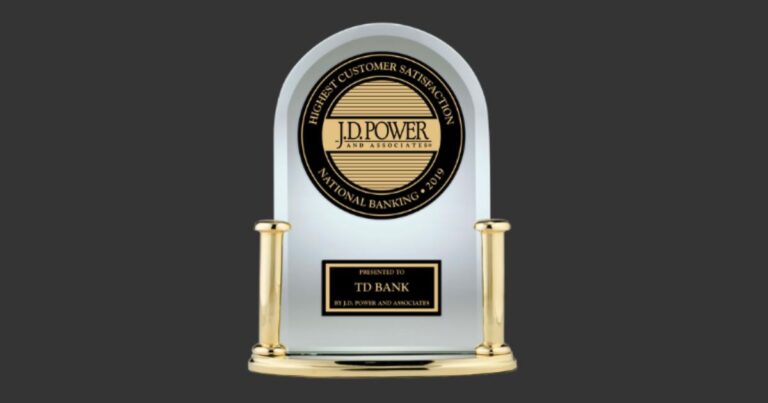TD Bank Struggles to Maintain Customer Loyalty in Philadelphia’s Retail Banking Sector
Recent findings from J.D. Power reveal a troubling trend for TD Bank in Philadelphia, where it now ranks lowest in retail customer satisfaction among major banks. Once a dominant player in the region, TD Bank is now facing intensified competition and customer dissatisfaction stemming from service inefficiencies and outdated digital offerings. This shift underscores the growing challenges the bank must overcome to remain competitive in a market increasingly driven by customer experience and technological innovation.
Customers have cited several pain points contributing to TD Bank’s diminished reputation, including sluggish response times, inconsistent service quality across branches, and a digital banking platform that falls short compared to rivals. Meanwhile, fintech companies and other traditional banks are rapidly expanding their presence in Philadelphia, raising the stakes for TD Bank to innovate and improve.
The primary issues impacting TD Bank’s customer satisfaction include:
- Prolonged resolution times for customer inquiries and complaints
- Lack of tailored, personalized service experiences
- Mobile app limitations and frequent technical disruptions
- Customer perception of fees not matching the value provided
The table below summarizes the latest customer satisfaction scores for leading Philadelphia banks, as reported by J.D. Power:
| Bank | Customer Satisfaction Score |
|---|---|
| PNC Bank | 820 |
| Wells Fargo | 795 |
| Chase Bank | 780 |
| TD Bank | 710 |
Industry experts emphasize that TD Bank must swiftly implement strategic reforms to regain customer confidence and halt the erosion of its market share in Philadelphia.
Underlying Reasons Behind TD Bank’s Declining Customer Experience
Several core issues have contributed to TD Bank’s drop in retail customer satisfaction within the Philadelphia market. Foremost is a noticeable deterioration in customer service standards, with many clients reporting extended wait times and inconsistent assistance from branch staff. Additionally, TD Bank’s digital banking tools lag behind competitors in both functionality and user-friendliness, frustrating customers who expect seamless online and mobile experiences.
Operational shortcomings also play a significant role. Internal reports suggest that TD Bank has struggled to modernize its back-office systems, leading to transaction delays and errors that negatively impact everyday banking activities. The table below highlights key customer pain points identified through recent feedback:
| Issue | Effect on Customers |
|---|---|
| Long wait times | Customer frustration and attrition |
| Outdated mobile application | Lower digital engagement and satisfaction |
| Delayed transaction processing | Erosion of trust and confidence |
Consequences of Poor Customer Satisfaction on TD Bank’s Market Competitiveness
TD Bank’s fall to the lowest rank in Philadelphia’s retail banking satisfaction charts is more than a temporary setback; it poses a serious threat to the bank’s future growth and competitive edge. Dissatisfied customers often share their negative experiences, which can deter potential clients and damage the bank’s reputation. In an era where digital innovation and customer-centric services are paramount, TD Bank’s current shortcomings risk driving customers toward more agile and responsive competitors, thereby shrinking its market share and profitability.
Key repercussions for TD Bank include:
- Declining customer loyalty, impacting steady revenue streams
- Increased exposure to competitors investing heavily in customer experience improvements
- Difficulty attracting younger customers who prioritize seamless, tech-driven banking
| Area of Impact | Likely Outcome |
|---|---|
| Brand Reputation | Negative reviews and social media criticism |
| Market Share | Loss to banks with superior customer satisfaction |
| Innovation Capacity | Urgent need to upgrade technology and services |
The onus is now on TD Bank’s leadership to prioritize customer experience enhancements over short-term financial gains. Failure to do so could stall expansion plans and undermine investor confidence amid an already challenging economic climate.
Actionable Strategies for TD Bank to Enhance Customer Experience and Rebuild Loyalty
To reverse its declining customer satisfaction, TD Bank must embark on a comprehensive strategy focused on elevating the client experience. Central to this effort is leveraging advanced data analytics to deliver personalized financial solutions and communications tailored to individual customer needs. Upgrading digital platforms to provide a smooth, intuitive user experience will be essential in reducing friction and wait times that currently frustrate customers.
Furthermore, TD Bank should establish dedicated service recovery teams tasked with promptly addressing customer complaints and restoring trust. Continuous employee training programs emphasizing empathy and problem-solving skills can also raise service quality at the branch level. The table below outlines key initiatives alongside their expected benefits:
| Initiative | Anticipated Benefit |
|---|---|
| Advanced Customer Analytics | More relevant products and higher satisfaction |
| Digital Platform Enhancements | Increased engagement and reduced customer churn |
| Service Recovery Teams | Quicker issue resolution and improved trust |
| Employee Training Programs | Consistent, positive customer interactions |
Looking Ahead: TD Bank’s Path to Recovery in Philadelphia
As TD Bank confronts its recent low ranking in Philadelphia’s retail customer satisfaction, the road forward demands decisive action. In a banking environment where customer experience is a key differentiator, the bank’s ability to address service gaps and modernize its offerings will be crucial to regaining trust and expanding its market share. Observers and stakeholders alike will be watching closely to see how TD Bank adapts and evolves in this pivotal regional market.








